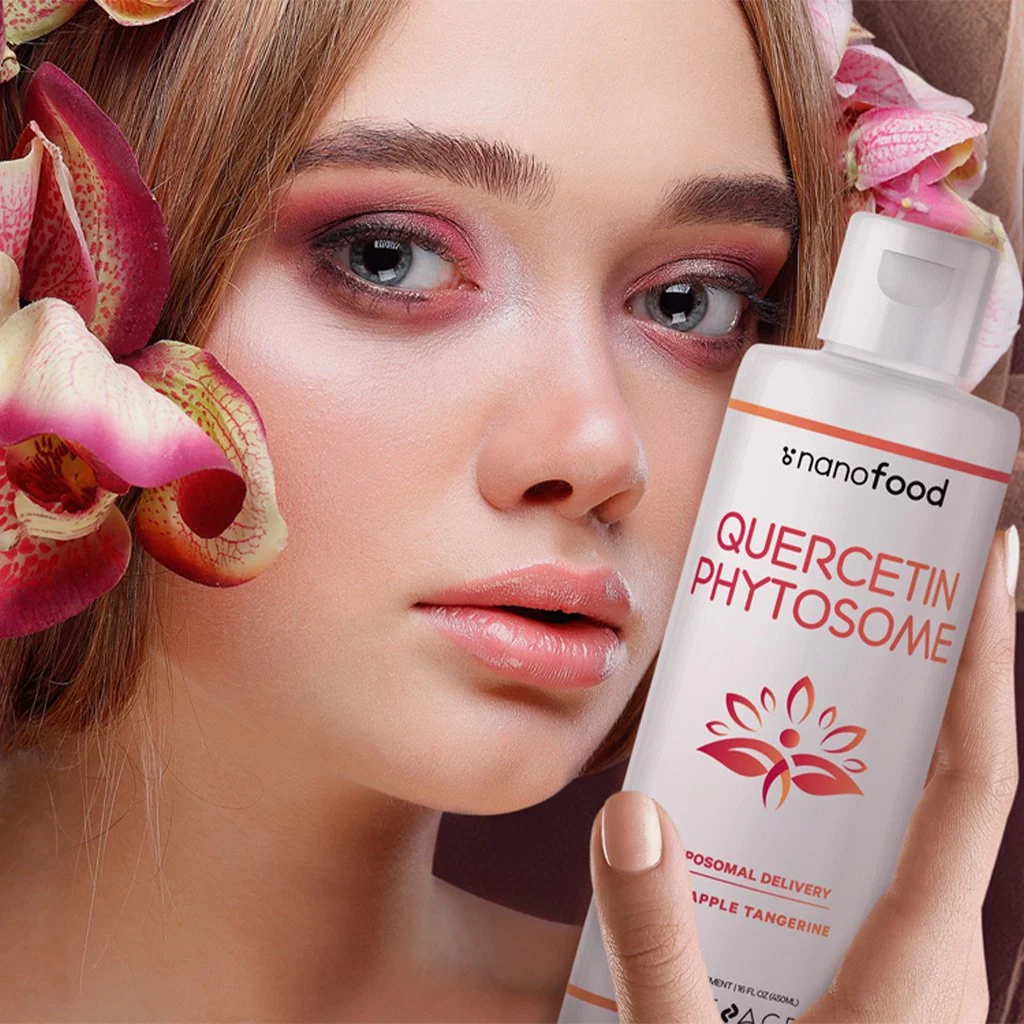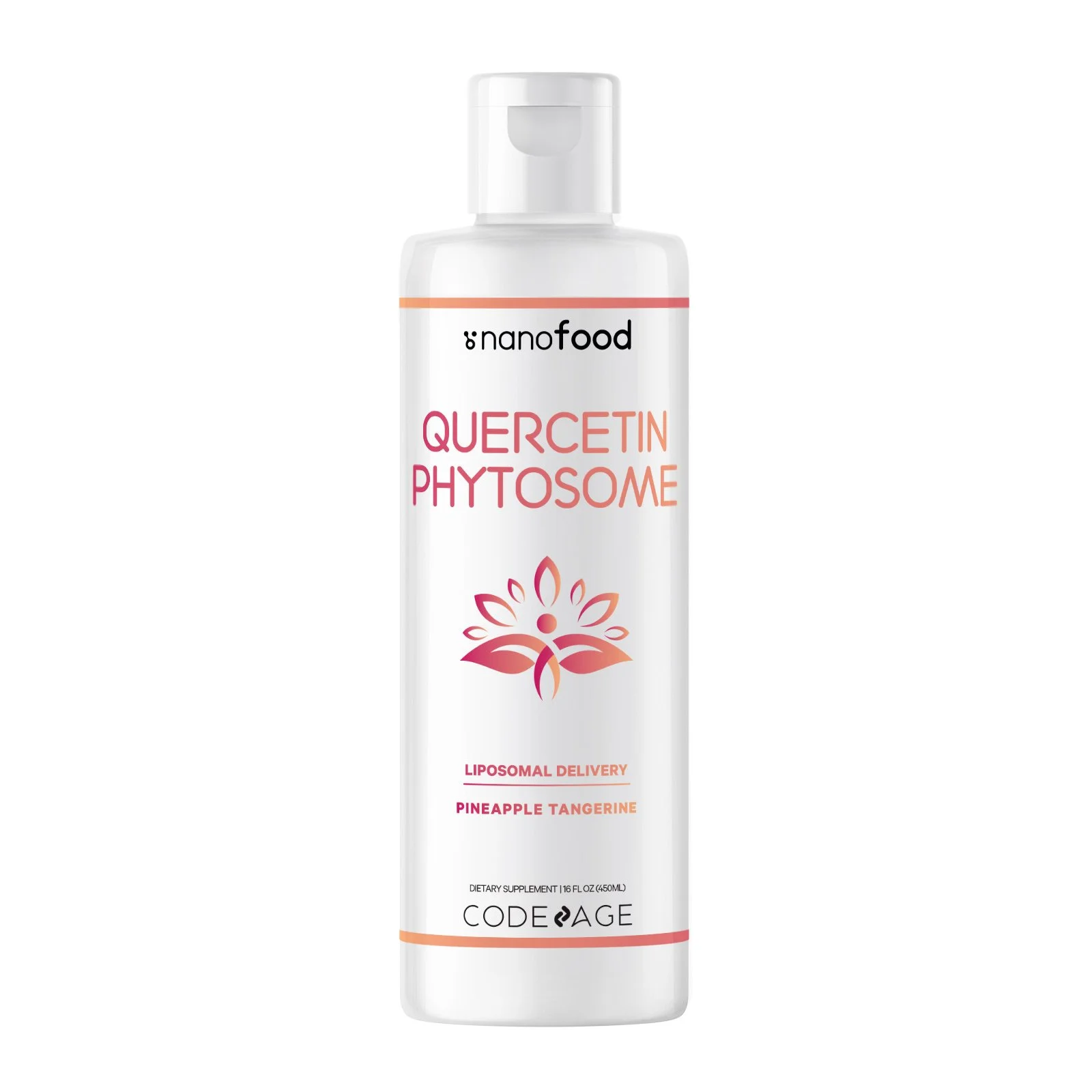
Quercetin Phytosome.
The combination of a flavonoid with liposomal delivery to discover quercetin through a modern supplementation formula.
What is quercetin?
Quercetin is a flavonoid that you can found in different fruits and vegetables. It can offer various wellness benefits. Quercetin is also known a natural antioxidant, which means it may help support the body and oxidative stress.
Quercetin is considered a plant flavonol and often categorized as belonging to polyphenols (flavonoid group). We can also find quercetin in certain leaves and seeds. Quercetin is also found in specific grains.
One of the best ways to get quercetin is to eat foods that are high in it, such as apples, onions, broccoli, and berries. However, if you're not a fan of those foods or if you're looking for a phytosome quercetin supplement, quercetin supplements are also available. Just be sure to consult with your doctor before starting any new supplement.
The beauty of phytosomes
Phytosomes are plant-based delivery systems for nutrients, herbs, and other bioactive compounds. They are made by combining the active ingredient with a phospholipid, which forms a liposome. Phytosomes differentiates themselves from unprotected ingredients, which could then potentially be absorbed by the body in a different way. This is where quercetin phytosome may offer a modern solution as it combines both parts in a single supplement formula.

“Liquid quercetin phytosome liquid & vitamin E with liposomal delivery.”
What is the role of quercetin as an antioxidant?
Quercetin may offer a certain level of antioxidant activity. Studies have analyzed the role of quercetin on glutathione or on the activity of certain enzymes for example. By supporting oxidative balance and playing a role on free radicals, quercetin may potentially possess some specific antioxidant activity. Quercetin is today seen as one of the most abundant dietary antioxidants as the flavonoid is omnipresent in different food types.
Bioavailability of quercetin may be highly variable and some forms of quercetin might be less bioavailable than others. Make sure to speak with your healthcare professional.
An important flavonoid
Flavonoids are usually categorized as a group of plant secondary metabolites. These molecules are widely distributed in plants and are believed to play a role in plant defense against pathogens and predators. Flavonoids are also believed to have specific properties for human health & wellness.

More about phytosomes
Herbal extracts or even products made with phytosomes (such as ginkgo biloba, milk thistle, and green tea) may in some cases provide a different level of absorption than those coming without phytosomes. Phytosome-based supplements are today available for different wellness purposes. This is the case for example of a quercetin complex (also known as quercetina). This could also be the case for some other types of ingredients or phytosomes supplement formulas. Always consider researching the nature of different ingredients and speak with your healthcare professional before using them.
If you are looking for a vegan or herbal supplement that could have a different type of absorption, you may then want to look for one that contains phytosomes and learn more about it. When choosing a phytosome-based product, make sure that the active ingredient is combined with a high-quality phospholipid, and ideally non-GMO as well.
Get started with Liposomal Quercetin Phytosome, today.
Liposomal delivery.
Liposomal delivery is a process that uses liposomes to deliver nutrients or other agents to the body. Liposomes are small, spherical vesicles that are made of a phospholipid bilayer. The bilayer is usually made up of two layers of phospholipids, which are molecules that can contain a phosphate group. Phospholipids are found in all cell membranes and are important for the proper function of cells.
The liposomal delivery process begins with the creation of liposomes. Liposomes can be created using a variety of methods, including sonication, extrusion, and dialysis. Once the liposomes have been created, the nutrients or solution can be inserted. The process for a nutrient to be added to the liposomes is often called loading but processes and terminology may different greatly.
Liposomal delivery seems to be a promising method for delivering nutrients and ingredients to the body. Liposomal delivery may provide some advantages over traditional methods of delivery. First, liposomes are usually smaller than most cells, may offer a different type of absorption and could help support targeting to specific areas. As always, this greatly depend on the use case, agent or ingredient and the types of studies that support these findings.
Nanofood.
Discover Quercetin Phytosome formula in a Pineapple Tangerine Flavor.
Additional information on phospholipid complex and liposomes.
As explained, liposomal delivery is a process that can be used to alter the way nutrients and other ingredients are used and consumed. The basic principle behind this type of delivery is that it can play a role with the protection of specific nutrients. This might be helpful in cases where there is a need to protect specific ingredients or nutrients. There are a number of different ways to prepare liposomes, and they can be made from different types of materials. The most common type of liposome is made from phospholipids, which are molecules that are found in cell membranes. Other types of liposomes can be made from cholesterol or other fats. When referring about quercetin, “activated quercetin” may come in quercetin liquid formats or in quercetin capsules for example.
Flavonoids.
Flavonoids are a large and diverse group of plant secondary metabolites. They are often yellow, orange, or red in color, and are found in fruits, vegetables, teas, and wines. Some flavonoids, such as quercetin sources, have been shown to potentially offer some antioxidant effects when consuming them as food. They also exists as quercetin vitamins or through different quercetin uses. In addition to their potential wellness benefits, flavonoids also have a number of other potential uses. For example, they can be used as natural food colorings or as preservatives. Flavonoids can also be used in cosmetics and sunscreens. Some good sources of flavonoids include berries, apples, onions, and broccoli.








